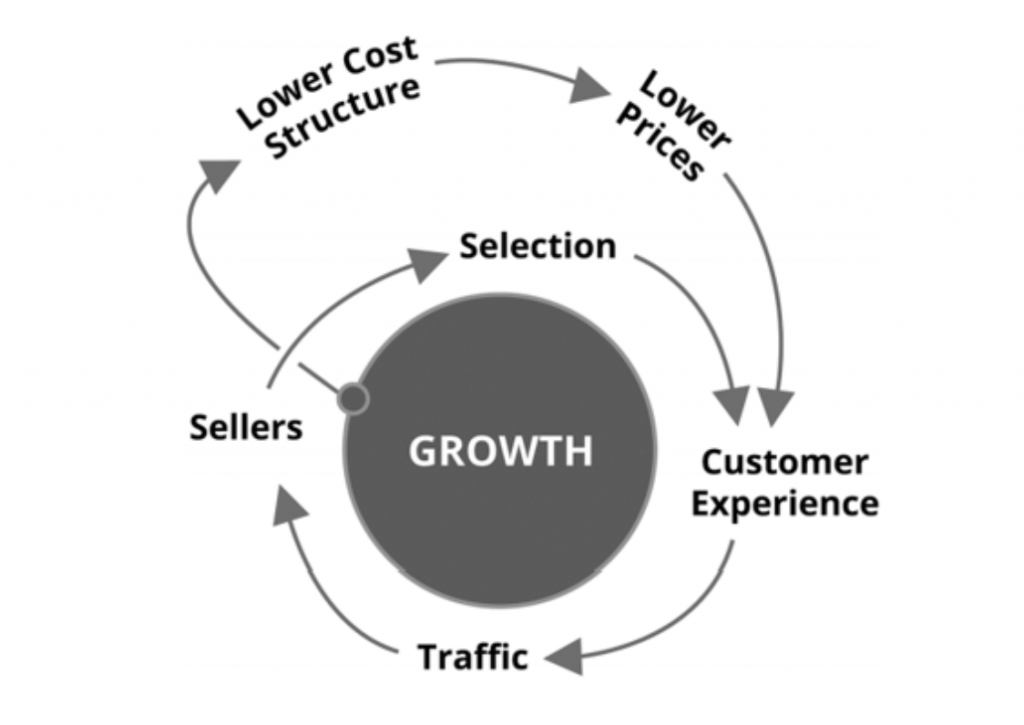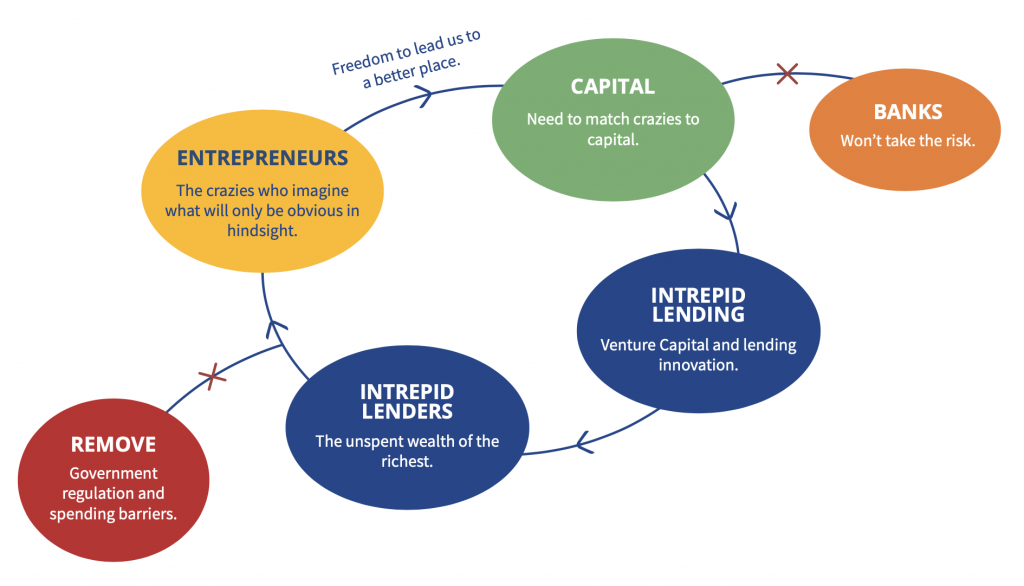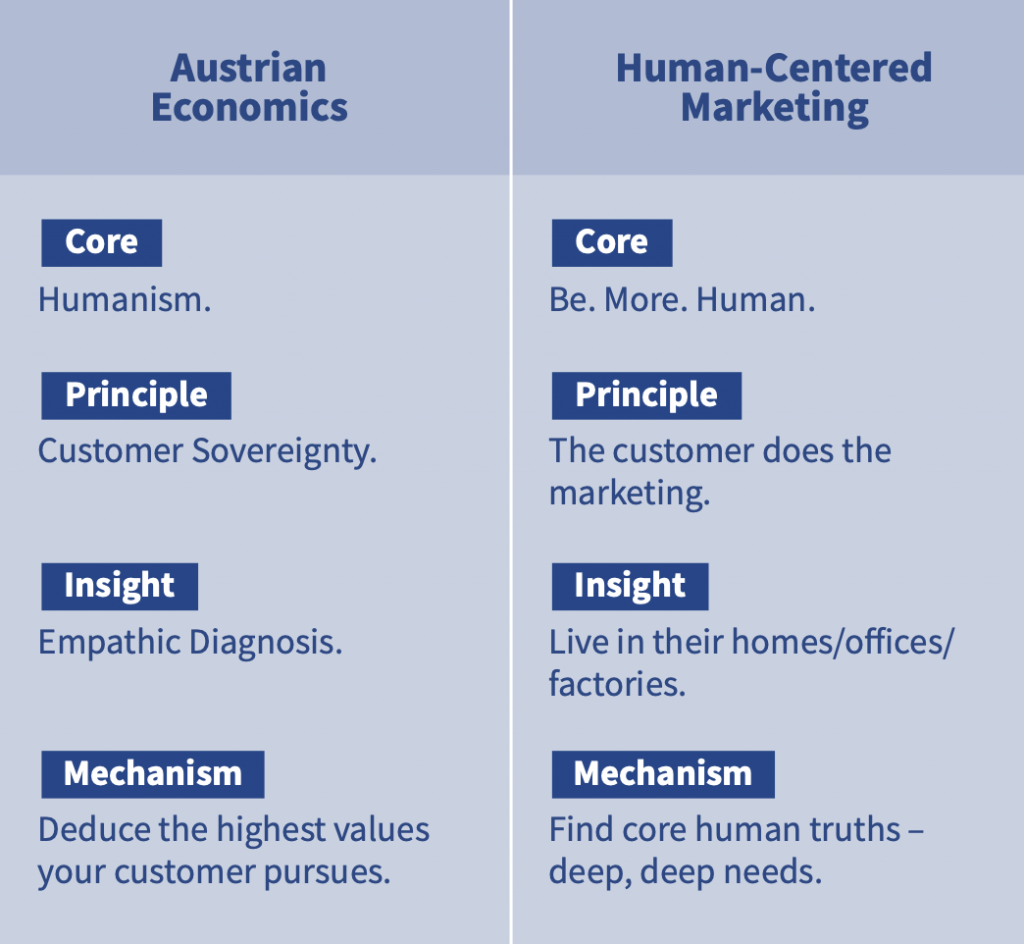78. Per Bylund Introduces the Austrian Business Model
Every business needs a business model, a recipe for generating profitable and sustainable revenues that result from bringing the customer an experience on which they place a high value.
How do entrepreneurs design successful and profitable business models? They combine theory and experience — theory provides the foundational starting point, and experience refines the model based on action-based learning and real-life feedback.
The best theory — the meta-theory — for business models comes from Austrian economics. This is a proposition we intend to demonstrate rigorously and completely in our Economics For Business platform. Dr. Per Bylund joined us on the Economics For Entrepreneurs podcast to provide an exposition and explanation of the core structure of the Austrian Business Model (ABM).
Key Takeaways and Actionable Insights
The model can be expressed as 4 core components for the entrepreneur:
- Understanding and defining subjective value.
- Facilitating value for specific customers.
- Exchanging value with customers in the market.
- Value dynamics — agility in continuously refining the value proposition.
1. Understanding Value
The foundation of the Austrian Business Model is a deep understanding of subjective value. This understanding changes everything: its implications ripple through the entire model from the beginning and throughout all phases.
Value is created only in consumption. The customer (in both B2C and B2B models) creates value. Value is in the customer’s domain. It’s an experience that customers evaluate after the fact against their expectations. The entrepreneur isn’t even present when value is created.
This is a very different premise than we are traditionally taught at business school or even in the everyday language of business discussion. For example, a popular book on business modelsi makes this statement: there is something about some firms that makes them more profitable than their rivals. In the framework of the ABM, we would say: there is something about some customers’ desired experiences that makes facilitating them more profitable than other customers’ desired experiences.
It’s hard to get one’s head around just how different this approach is. It requires some new behaviors:
- Obsessive and total focus on the customer — identifying them, understanding them, letting them lead the process of value creation.
- Selection of a precisely defined group or cohort of customers as your audience, with continuous development of ever deeper and more detailed understanding of their subjective preferences.
- Development of a value proposition — a hypothesis about how you will help the customer to an experience that they will value. It’s simply that — a hypothesis that you will test as much as possible for verification, but which is never proven until the cycle of market exchange, experience and evaluation is completed.
Phase 1 is an understanding phase for the entrepreneur.
2. Facilitating Value for Specific Customers
Starting from the hypothetical value proposition, the entrepreneur advances to the phase of designing a value experience for the chosen target audience of customers, based on as deep an understanding of their subjective values as it is has been possible to develop so far. The entrepreneur is continually adding to that understanding — creating new knowledge as much and as frequently as they can.
Design consists of imagining every element of the customer’s experience, based on their value learning cycle. What is it about your value proposition that will make them anticipate a valuable experience? What will make them feel that this experience is preferable to any alternative they have, direct or indirect. What will cause them to exchange value — give their dollars for your offering — and what is the price they will be willing to pay? What ensures that they will assess the experience positively after the event?
The key to design is (1) to imagine every possible element of the subjective experience, empathically embracing the customer’s individual context; (2) to understand that every little detail counts and that small differences in delivery can make a huge difference to the perceived experience. In fact, since customer service is so highly developed in modern economies, it is the small details that generate differentiation and uniqueness for your brand.
Then the entrepreneur turns to value assembly, assembling the resources to deliver the desired features and attributes of the experience to market. What is the right organization for market delivery? Since it is impossible to know exactly the costs and quality you will be able to achieve in your firm, Austrian theory advises entrepreneurs to obtain as much of the required capability on the market at market prices — via outsourcing, partnerships, alliances, and external supply chains — and to limit internal capabilities only to those that cannot be obtained on the market, those that are genuinely unique and advantaged for you.
Use a value alignment approach to check for each element that your value delivery is aligned with the customer value preference — that you know what they want and you can deliver it in the way that they want it.
And include communications design and delivery as part of your experience design. It’s not an add-on or a supplement or a marketing budget item to dial up or dial down depending on cash availability. It’s part of the customer experience that you are designing and delivering.
Finally, make measurement part of the experience design. Once in the marketplace, your value proposition goes “wild”. You no longer control it. The customer is creating the value and you are not. The best you can do is to be available if they want to invite you into their process, and to be observant of their behavior. Measurement is observation. Don’t presuppose, but do collect data, preferably qualitative data at the individual customer level. This is your raw input for continuous improvement.
Phase 2 is a customer-led design and assembly phase for the entrepreneur.
3. Exchanging Value
Does the customer perceive sufficient value to enter into exchange? It’s the ultimate market test. The customer is weighing the benefits they subjectively perceive against the costs, which include money but also any other difficulties or barriers they perceive to making the exchange. Is participating in your offering totally convenient (which is the general standard today) or is there anything in the experience that makes it less convenient and less compelling?
The best way to solve this challenge is to experiment with as many offer bundles as you can in order to observe market results. Does your service sell better online or direct-to-customer? Do customers prefer to subscribe to buy by the unit? If they try, do they convert? Test as many bundles as you can.
Once you have established the right bundle and willingness to pay, calculate your cash flow and choose your costs in order to generate the margins and profits you require. This is the opposite of the margin math taught in business school, where firms calculate their costs and then add a margin. Austrians discover the price the customer is willing to pay, and then chooses the costs compatible with that willingness to pay. The customer determines the price of the exchange, not the entrepreneur.
Cash flow is your most important financial metric. Make sure you monitor it closely and make sure your accounting methods are the right ones to serve your individual ends. Accounting is a tool like any other — use it subjectively to help you meet your goals.
Phase 3 is an experimenting and testing phase for the entrepreneur.
4. Value Agility
You’ve achieved some marketplace results. You’ve established that the customer perceives value in your offering and they’re willing to pay a price that generates positive cash flow and profit.
That same marketplace is incessantly changing. Your approach to the 4th stage of the Austrian business model is dynamic. You make sure that you have all the feedback loops required to receive marketplace data about the acceptance of your offering, and any changes in customer preferences and competitive behaviors. You manage 360 degree monitoring of the customer experience and you anticipate and expect that your experience design, however excellent, will erode over time. The customer will demand something even better, and competitors will aim to match or improve on your delivery. It’s important to keep your model of customer value preferences fresh, and to be planning and preparing new and improved value facilitations. Agile entrepreneurs continually test and evaluate innovations, and introduce them to the marketplace. Value improvement and value innovation are your goals. The process never stops. The journey never comes to an end.
Your business model must yield sufficient cash flow for substantial amounts of new capital investment each year. Your organizational design must facilitate the addition of new capabilities and the discontinuation or de-emphasis of existing capabilities that no longer are perceived as unique or compelling by the changing customer. Agile entrepreneurs monitor their dynamic capability — how much is being added, how much is being changed or updated. Are you keeping up with the customer, the ecosystem in which you engage, and your competitors?
Phase 4 is a phase of continuous dynamic change for the entrepreneur.
Over the next few months, we’ll be building out the tools and knowledge entrepreneurs need for every one of the four phases of the model and the steps within. Keep up with us at E4EPod.com/signup.
Free Downloads & Extras From The Episode
Dr. Bylund’s Mises University Lecture, “Austrian Economics in Business”: Mises.org/E4E_78_Lecture1
Dr. Bylund’s Mises University Lecture, “How Entrepreneurs Built the World”: Mises.org/E4E_78_Lecture2
“Means-Ends Chain Tool” (PDF): Mises.org/E4E_01_PDF
“Tools for the Value Learning Process” (PDF): Mises.org/E4E_62_PDF
“Identifying Dissatisfaction Interview Guide” (PDF): Mises.org/E4E_Interview
“Insights Generation Tool” (PDF): Mises.org/E4E_67_PDF_A
“ACT! Austrian Capital Theory at Work” (PDF): Mises.org/E4E_19_PDF
“The Austrian Business Model” (video): Mises.org/E4E_ABM
Start Your Own Entrepreneurial Journey
Ready to put Austrian Economics knowledge from the podcast to work for your business? Start your own entrepreneurial journey.


